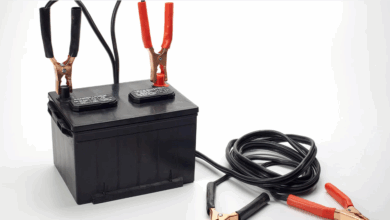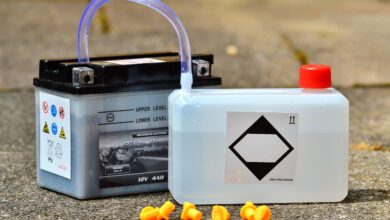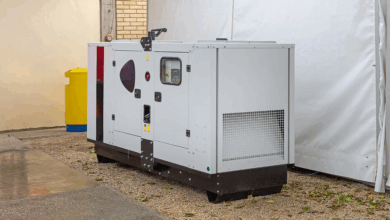Your Portable Powerhouse: Exploring 5000 Watt Generator Options

Your Portable Powerhouse: Exploring 5000 Watt Generator Options
In a world increasingly reliant on electricity, having a reliable backup power source is no longer a luxury – for many, it’s a necessity. Whether facing a sudden power outage, working on a remote job site, hitting the open road in an RV, or enjoying the great outdoors at a campsite, a generator provides the independence and peace of mind to keep lights on, tools running, and essentials powered.
Among the vast landscape of generator sizes, the 5000-watt class stands out as a remarkably popular and versatile choice. It hits a sweet spot, offering significant power output capable of handling multiple essential appliances and tools simultaneously, without being excessively large, heavy, or expensive like much higher output models. This makes the 5000-watt generator a true "portable powerhouse" for a wide range of applications.
But what exactly does 5000 watts mean in practical terms, and what should you consider when exploring options in this category? Let’s dive in.
Understanding the Power: Running vs. Starting Watts
When generator shopping, you’ll encounter two key terms: running watts (or continuous watts) and starting watts (or surge watts).
- Running Watts: This is the power a generator can continuously produce to keep appliances and tools running steady-state. A 5000-watt generator is rated to handle a continuous load of approximately 5000 watts.
- Starting Watts: Many electrical devices, especially those with motors (like refrigerators, air conditioners, pumps, and power tools), require a brief surge of power upon startup that is significantly higher than their running wattage. A 5000-watt running generator will typically have a higher starting wattage capacity, often ranging from 6000 to 7500 watts or more. This surge capacity is crucial for simultaneously starting multiple motor-driven appliances.
The 5000-watt rating usually refers to the running wattage. This substantial output means you can power a combination of items like:
- Refrigerator and freezer
- Sump pump
- Lights throughout a significant portion of a home
- Television and electronics
- Microwave oven
- Window air conditioner (small to medium size)
- Furnace fan (most standard models)
- Multiple power tools on a job site
- RV essentials (lights, fridge, AC, microwave – though check specific RV needs)
While 5000 watts might not power an entire large home with all appliances running simultaneously, it’s more than sufficient for keeping critical systems operational during an outage or providing ample power for demanding portable applications.
Exploring Your 5000 Watt Generator Options
Within the 5000-watt class, you’ll find generators categorized by type, fuel source, and features.
-
Conventional (Open Frame) Generators:
- Description: These are the traditional, often more rugged-looking generators with an exposed engine and alternator housed within a metal frame.
- Pros: Generally the most cost-effective option for the power output. Known for their durability and straightforward design. Widely available.
- Cons: Typically much louder than inverter generators. Produce power with higher Total Harmonic Distortion (THD), which might not be ideal for sensitive electronics without a voltage regulator. Less fuel-efficient than inverters.
- Use Case: Backup power for essential appliances during outages, construction sites, powering non-sensitive equipment.
-
Inverter Generators:
- Description: Inverter technology converts AC power to DC and then back to clean AC power using a sophisticated microprocessor. They often have a more enclosed design. While 5000-watt inverter generators are less common than smaller sizes (like 2000-3500W), they are available from several manufacturers.
- Pros: Produce "clean" sine wave power (low THD) suitable for all electronics, including sensitive computers and medical equipment. Much quieter operation than conventional generators. More fuel-efficient, often with variable engine speed that adjusts to the load. More portable for their power class (though 5000W is still heavy).
- Cons: Significantly more expensive than conventional generators of the same output.
- Use Case: Powering sensitive electronics, RVing, camping, situations where noise is a major concern, backup power for homes with modern appliances/electronics.
- Dual-Fuel Generators:
- Description: Many 5000-watt generators offer the flexibility to run on either gasoline or liquid propane (LP). They have connections for both fuel types.
- Pros: Fuel flexibility is a major advantage. LP stores longer than gasoline without degradation and burns cleaner. If one fuel source is unavailable, you can switch to the other.
- Cons: May have slightly lower power output when running on LP compared to gasoline. Can be slightly more complex than single-fuel models.
- Use Case: Anyone wanting versatility, especially for extended outages where gasoline might be scarce, or for users who already utilize LP (like RVers or homeowners with large LP tanks).
Key Factors to Consider When Buying
Beyond the basic type, evaluating these features will help you choose the right 5000-watt generator:
- Noise Level (dB): Measured in decibels (dB), usually at a distance of 23 feet. Lower dB numbers mean quieter operation. Conventional generators typically range from 70-80 dB, while inverter models can be 50-65 dB (load dependent).
- Run Time: How long will the generator run on a full tank of fuel? This varies based on fuel tank size and the load being drawn. Look for run time specifications at 50% load.
- Outlets: Ensure the generator has the types and quantity of outlets you need (standard 120V household outlets, potentially a 240V outlet for larger appliances or transfer switch connection, twist-lock outlets for secure connections, and possibly USB ports).
- Starting Method: Most 5000W generators offer a recoil (pull) start. Many also include electric start (push button or remote), which is a significant convenience, especially in cold weather or for users with limited physical strength.
- Portability Features: While 5000W generators are heavy (often 100+ lbs), models with included wheel kits and folding handles are much easier to maneuver.
- Safety Features: Look for automatic low oil shutoff (protects the engine), circuit breakers (prevent overload damage), and covered outlets.
- Fuel Gauge & Hour Meter: Useful for monitoring fuel levels and tracking maintenance intervals.
- Brand Reputation & Warranty: Choose reputable brands known for reliability and customer support. Check the warranty duration.
Safety First!
Operating any generator requires strict adherence to safety guidelines.
- Carbon Monoxide: Generators produce deadly carbon monoxide gas. NEVER operate a generator indoors, in a garage, or near windows, doors, or vents that could allow fumes to enter occupied buildings. Place the generator outdoors, far away from structures. Consider installing CO detectors in your home.
- Electrical Safety: Never connect a generator directly to your home’s electrical system without a proper transfer switch or interlock kit installed by a qualified electrician. Backfeeding the grid can injure or kill utility workers. Use heavy-duty, outdoor-rated extension cords appropriate for the load.
- Fueling: Turn the generator off and let it cool completely before refueling. Fuel is highly flammable. Store fuel safely in approved containers away from living areas and ignition sources.
- Weather: Do not operate a generator in rain or wet conditions. Provide adequate shelter (like an open-sided canopy) that does not impede ventilation.
- Maintenance: Follow the manufacturer’s recommended maintenance schedule (oil changes, filter cleaning/replacement) to ensure safe and reliable operation.
The 5000 Watt Advantage
The enduring popularity of 5000-watt generators stems from their excellent balance of power, cost, and relative portability (especially with a wheel kit). They offer a significant step up from smaller generators, capable of powering not just a few lights and a fridge, but critical systems and multiple appliances needed for comfort and function during extended disruptions. For many homeowners, small business owners, and outdoor enthusiasts, a 5000-watt unit represents a smart investment in reliable, on-demand power.
Frequently Asked Questions (FAQs)
-
Q1: What exactly can a 5000-watt generator power?
- A: A 5000 running watt generator can power a combination of essential appliances like a refrigerator, sump pump, lights, TV, and furnace fan, or power tools. It often has a starting capacity (surge) of 6000-7500+ watts to handle the startup surge of motors.
-
Q2: Is 5000 watts enough to power my entire house?
- A: Generally, no. 5000 watts is sufficient for essential circuits (lights, fridge, freezer, pump, furnace fan) and potentially one or two major appliances at different times. Powering a whole house simultaneously, including central air conditioning, electric heat, electric stove, etc., typically requires a much larger generator (10,000+ watts, often a standby system).
-
Q3: What’s the difference between a conventional and an inverter 5000-watt generator?
- A: Conventional generators are typically louder and produce power with more distortion (higher THD), making them less suitable for sensitive electronics. Inverter generators are quieter, more fuel-efficient, and produce clean power (low THD) safe for all electronics, but they are more expensive.
-
Q4: How noisy is a 5000-watt generator?
- A: Noise levels vary. Conventional 5000W generators are quite loud, typically 70-80 decibels (dB) measured at 23 feet. 5000W inverter models are significantly quieter, often in the 50-65 dB range depending on the load. Check the generator’s specifications for its dB rating.
-
Q5: Can I use a dual-fuel generator on propane all the time?
- A: Yes, if it’s a dual-fuel model. Propane burns cleaner and stores longer than gasoline, though the power output on propane might be slightly lower than on gasoline for the same generator.
-
Q6: How do I safely connect a generator to my house?
- A: The safest way is through a properly installed transfer switch or interlock kit connected to your home’s electrical panel by a qualified electrician. This prevents dangerous backfeeding into the utility lines. Do NOT connect it directly to an outlet (backfeeding).
- Q7: What maintenance does a 5000-watt generator need?
- A: Regular maintenance includes checking/changing the oil, cleaning/replacing air filters, checking spark plugs, and stabilizing fuel (especially if storing gasoline for extended periods). Always consult the owner’s manual for the specific model’s maintenance schedule.
Conclusion
The 5000-watt generator class occupies a vital space in the portable power market. Offering a robust level of power capable of sustaining multiple critical systems and appliances, they provide a reliable solution for everything from emergency home backup to powering demanding tools on a job site or bringing comfort to remote locations. By understanding the difference between running and starting watts, exploring the types (conventional, inverter, dual-fuel), and carefully considering factors like noise, run time, and safety features, you can confidently select the 5000-watt powerhouse that best meets your specific needs, ensuring you’re prepared for whatever comes your way.




![How to Bypass CO Sensor on Generator – [4-Step Safety Guide]](https://www.generator411.com/wp-content/uploads/2025/08/co-sensor-on-generator-390x220.png)